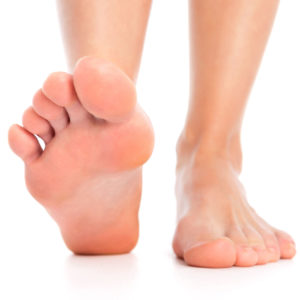 The ball of your foot takes the majority of force when you walk, run, jump and dance, and although it has a little extra padding compared to your arch or your toes, it is still susceptible to injury. Some people notice that this area is swollen and sore, especially after activities like running or other athletic events. Is a swollen ball of your foot a cause for concern, or should you just push through the discomfort? We answer those questions and more below.
The ball of your foot takes the majority of force when you walk, run, jump and dance, and although it has a little extra padding compared to your arch or your toes, it is still susceptible to injury. Some people notice that this area is swollen and sore, especially after activities like running or other athletic events. Is a swollen ball of your foot a cause for concern, or should you just push through the discomfort? We answer those questions and more below.
The Ball of Your Foot
The ball of your foot, also known as the metatarsal, can be affected by a number of different issues. Some of these problems respond well to rest, while others need more active treatment. Here’s a look at some conditions that can affect the ball of your foot, and how they are treated.
Metatarsalgia – This condition, sometimes referred to as a stone bruise, occurs when inflammation develops in the middle toes where they connect to the ball of your foot. Swelling and inflammation in this region can lead to pain and discomfort with each step. It is a common condition in physically active individuals, especially forefoot-strike pattern runners. Treatment includes rest, investing in shoes with more forefoot padding and over-the-counter pain and anti-inflammatory medications.
Rheumatoid Arthritis – Another potential issue is rheumatoid arthritis, which is categorized by swelling and discomfort in the joints. It can affect a number of different areas of your body, include the ball of your foot. Although arthritis cannot be reversed, controlled exercise, physical therapy, a healthy diet, rest and stretching routines can all help to limit discomfort and slow the progression of the condition.
Hanmertoes – Hammertoes develop when there are pressure imbalances on your toe tendons and joints, leading the middle of the toe to bend upwards, giving your toe a scrunched appearance. This can lead to abnormal stress on the metatarsals and swelling in the ball of the foot. Wearing appropriate sized shoes for activity can help mild cases, but for more serious cases of hammertoes, physical therapy and even surgery are recommended.
Arch Problems – Finally, there’s also the possibility that the swelling in the ball of your foot is due to an arch issue. If you have an overly high arch or a very flat foot, your metatarsals may be handling more stress than normal, which can again lead to swelling in the ball of your foot. Arch supports and a consultation with a foot specialist are great ways to ensure your arch issue isn’t putting undue stress on the ball of your foot.
For more tips, or if you’d like to set up a consultation with Dr. Silverman, contact his office today.